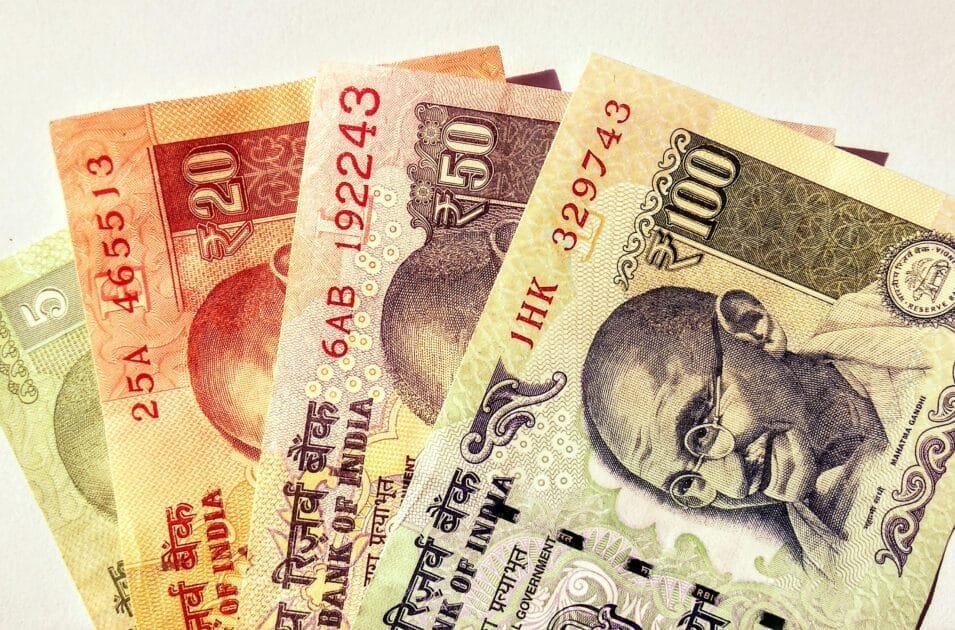A SIM card scam is a type of cyber fraud where criminals trick your mobile operator into transferring your phone number to a SIM card they control — this is called SIM Swap Fraud. Once successful, they receive your OTPs, bank alerts, and login codes, allowing them to steal your money or hijack your digital identity.
In today’s digital age, our mobile number has become more than just a contact detail—it is the gateway to our entire digital life. From banking transactions and social media accounts to email access and government portals, a mobile number acts as the verification key for almost every online activity. This is why cybercriminals have increasingly turned to a dangerous tactic known as the SIM Card Scam or SIM Swap Fraud. As we move into 2025, this type of scam is becoming one of the most prevalent and damaging cybercrimes in India and around the world.
What is SIM Card Scam?
A SIM Card Scam, also known as SIM Swap Fraud, is a form of identity theft in which fraudsters trick a mobile service provider into transferring your mobile number to a new SIM card that they control. Once the number is ported, the scammer gains access to your calls, SMS messages, and most importantly, one-time passwords (OTPs) used in banking and other secure applications. With control of your mobile number, a criminal can bypass two-factor authentication (2FA) and gain full access to your digital accounts.
This scam is particularly dangerous because victims often don’t realize what has happened until their bank accounts have been emptied or their social media accounts have been hijacked.
How SIM Swap Fraud Happens: Step-by-Step Breakdown
- Information Gathering: The scam typically begins with the fraudster collecting personal details about the victim. This could include full name, date of birth, address, mobile number, and even Aadhaar or PAN card information. They gather this data using phishing emails, fake job offers, malware, social media stalking, or data leaks from unsecured websites.
- Spoofing or Impersonation: Once they have enough information, the scammer contacts your mobile service provider posing as you. They may claim that their phone has been lost or the SIM is damaged. With forged documents or sometimes through an insider at the telecom company, they request a duplicate SIM.
- SIM Activation: If successful, the service provider deactivates your SIM and activates the new one provided to the scammer. From this point, all your calls, SMSs, and OTPs are routed to the criminal’s device.
- Account Takeover: The scammer now uses OTPs to reset passwords, transfer funds, or even lock you out of your own bank, UPI, or email accounts.

Real-Life Example: Mumbai SIM Swap Fraud Case
In a widely reported case from Mumbai in 2023, a marketing executive suddenly found that his phone had no signal. Assuming it was a network issue, he waited a few hours before contacting customer care. By then, over Rs. 2.4 lakh had been transferred out of his savings account using UPI. The fraudster had convinced the telecom operator to issue a duplicate SIM, accessed OTPs, and completed unauthorized transactions before the victim realized what had happened.
This is not an isolated case. According to the Indian Computer Emergency Response Team (CERT-IN), SIM swap incidents rose by over 300% between 2021 and 2024, with frauds ranging from Rs. 10,000 to over Rs. 10 lakhs.
Why SIM Card Scam is So Dangerous
- Bypasses Two-Factor Authentication: Even if you use 2FA, it becomes useless if the fraudster has access to your OTPs.
- Silent Attack: You may not receive any alerts since all communications go to the attacker.
- Multiple Account Access: With your number, they can access Gmail, Facebook, Instagram, and even crypto wallets.
- Loss of Digital Identity: Your identity may be used to commit further frauds or even crimes.
Common Signs You May Be a Target
- You suddenly lose mobile network or signal for more than an hour.
- You receive messages about SIM activation that you did not request.
- You notice unauthorized transactions or email alerts.
- You can’t log into your banking or social accounts.
10 Effective Ways to Protect Yourself from SIM Swap Fraud
- Use an Authenticator App: Instead of receiving OTPs via SMS, use apps like Google Authenticator or Authy for 2FA. These are device-specific and cannot be stolen through SIM swapping.
- Set Up a SIM PIN: Lock your SIM card using a PIN code that is different from your phone lock code.
- Keep Banking Number Private: Use a separate number for banking, one that is not shared on social media or public forms.
- Avoid Clicking on Suspicious Links: Phishing links can steal your data or install malware.
- Use Strong Passwords: Never reuse passwords and use a password manager to create complex ones.
- Enable Banking Alerts: Always opt-in for SMS and email alerts for every transaction.
- Regularly Check Linked Devices: Review which devices are logged into your email and social accounts.
- Monitor Your Network Activity: If you lose signal unexpectedly, contact your telecom provider immediately.
- Stay Informed About Cyber Threats: Awareness is your first line of defense. Follow official cyber security advisories.
- Use the Sanchar Saathi Portal: Visit Sanchar Saathi to check which SIMs are registered under your name and report unknown ones.

What is Sanchar Saathi and How Can It Help?
Sanchar Saathi is an initiative by the Indian Department of Telecommunications to protect mobile users. It offers tools to:
- Check how many mobile numbers are issued in your name
- Report lost or stolen devices
- Block unauthorized SIM cards
- Prevent identity misuse
If you notice unknown numbers, you can immediately report them to your service provider and get them blocked.
The Role of Telecom Companies and Regulatory Bodies
Apart from user vigilance, telecom operators and regulatory authorities have a crucial role to play in combating SIM card scams. Telecom companies must strengthen their verification processes before issuing a new SIM. This includes strict KYC checks, facial recognition verification, and sending alerts when a duplicate SIM request is received. Regulatory bodies like TRAI and DoT should mandate multi-layered security protocols and initiate awareness campaigns for the public. Without industry-level enforcement, even tech-savvy users remain vulnerable. Ensuring better coordination between telecom operators, banks, and law enforcement can significantly reduce the risk of fraud and speed up resolution for victims.
The Psychological and Financial Aftermath for Victims
The consequences of SIM swap fraud go far beyond financial loss. Many victims experience anxiety, fear, and distrust after being targeted. The feeling of being watched or vulnerable can last for weeks or even months. Financial recovery is often time-consuming and stressful, involving police reports, follow-ups with multiple banks, and long waiting periods for refunds. In some cases, if the bank determines the negligence was on the part of the user (such as not reporting network loss quickly), they may not reimburse the stolen amount. This double blow—financial and emotional—makes it critical to take proactive measures and spread awareness to help others avoid falling prey to such scams.
The Growing Risk in Rural and Tier-2 Cities
While metro cities report a large number of SIM swap cases, Tier-2 towns and rural areas are increasingly being targeted due to lower digital awareness and relaxed telecom operations. Fraudsters often exploit the lack of KYC enforcement in smaller outlets to activate SIMs with forged IDs. In many cases, elderly users and low-literacy users are victimized because they are unaware of OTP risks or SIM security. This highlights the need for digital literacy campaigns at the grassroots level and stronger monitoring by telecom companies in rural areas. The government, in collaboration with NGOs, should launch mobile security awareness drives, especially targeting youth, farmers, and homemakers, to educate them on cyber hygiene.
What to Do If You Fall Victim to a SIM Swap Attack
- Block Your Bank Accounts: Contact your bank’s fraud helpline to freeze all transactions.
- Report the Incident: File a complaint at cybercrime.gov.in.
- File an FIR: Visit your nearest cybercrime police station and register an FIR.
- Check and Reset All Accounts: Change passwords and check for unauthorized access.
- Inform Your Telecom Provider: Reclaim your mobile number and secure it with a PIN or biometric lock.
Government Helplines and Legal Resources
- Cyber Crime Portal: https://cybercrime.gov.in/
- Cyber Crime Helpline Number: 1930 (India)
- Department of Telecommunications: https://sancharsaathi.gov.in/
These platforms allow victims to register complaints quickly and track the progress of their cases.

Real Voices: Victims Speak Out
“My phone went into SOS mode, and I watched $140,000 vanish. It was too easy for the device to be taken over.”
— Wayne Stork, Greater Toronto Area, Canada (loss of USD 140k in SIM swap fraud) english.varthabharati.in+15the-sun.com+15natwest.com+15
“EE notified me of a SIM activation request I had not made. I acted immediately, but 24 hours later my phone stopped working and money was withdrawn from my bank account. I’ve had four weeks of stress, data loss, and no meaningful apology from the provider.”
— ‘JN’, Bath, UK (EE SIM swap victim) mondaq.com+13theguardian.com+13mycommunityfinance.co.uk+13
Final Thoughts: Awareness is the Best Defense
The SIM Card Scam is not just another phishing attempt — it is a full-scale identity hijack. With a growing dependency on mobile numbers for every aspect of digital verification, the risks associated with SIM Swap Fraud are greater than ever. As financial frauds get more sophisticated in 2025, the best way to stay protected is to remain vigilant.
Make cyber hygiene a part of your daily digital life. Use two-factor authentication smartly. Don’t overshare online. And most importantly, act fast when something seems off.
Protecting your digital identity is no longer optional — it’s essential.
Stay safe, stay alert, and spread awareness.



